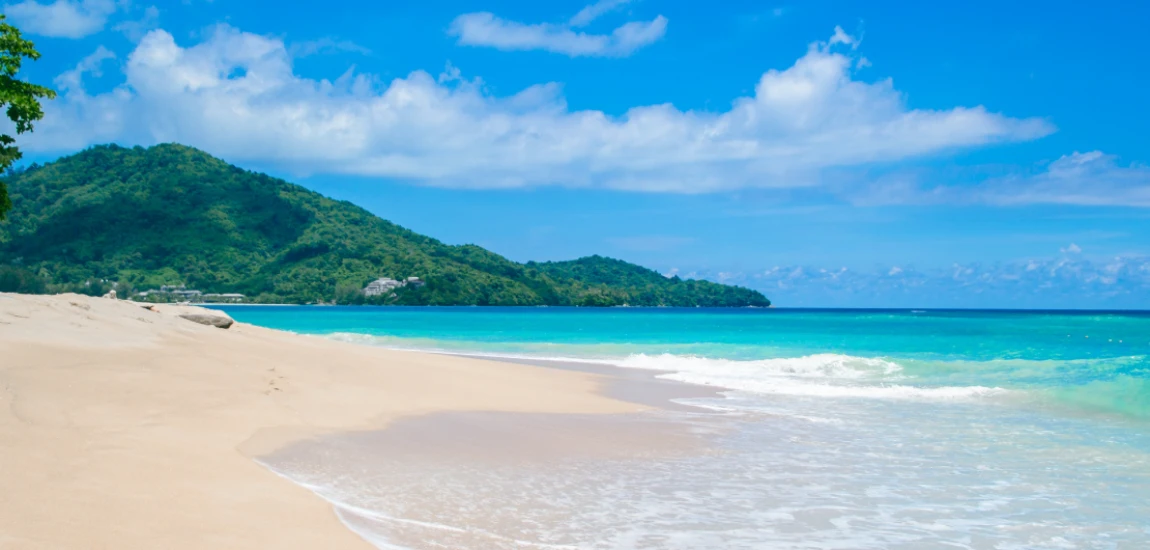Beaches That Disappear Completely

For many travelers, beaches represent timeless escapes—stretches of golden sand, turquoise waters, and palm trees swaying in the breeze. But not all beaches remain fixed. In certain corners of the world, the beach itself seems to vanish, swallowed by the ocean at high tide or erased by seasonal storms. These are the beaches that disappear completely, and they are among the most fascinating natural phenomena a traveler can witness.
Why do they vanish? The answer lies in the dynamic forces of nature. Tides, wind, storms, and shifting sands reshape coastlines constantly. Most of the time, changes are subtle and gradual. But at certain locations, the transformations are dramatic—so much so that entire stretches of sand appear and vanish within hours or months. Standing on one of these disappearing beaches feels like being in the middle of a natural magic trick.
For travelers, the appeal is twofold. First, there’s the thrill of witnessing a rare phenomenon that few people get to see. Second, there’s the awareness that timing is everything. Arriving at the wrong hour might leave you staring at waves crashing against rocks. Arriving at the right moment means stepping onto a beach that might not exist tomorrow.
In this guide, we’ll explore some of the world’s most striking disappearing beaches. We’ll dive into the science behind their vanishing acts, the culture and stories that surround them, and practical tips for experiencing them safely. Whether it’s a tidal marvel in India, a hidden inland shore in Spain, or seasonal sands in Portugal, these beaches remind us of one powerful truth: nature is always in motion.
The Mystery of Disappearing Beaches
Disappearing beaches aren’t a trick of the eye—they are part of the ocean’s rhythm. To understand them, you need to understand tides, currents, and sediment movement.
Tides are the most common culprit. In regions with extreme tidal ranges, the difference between high and low tide can be several kilometers. Beaches in these areas vanish underwater for part of the day, then reappear when the tide retreats. This happens daily, meaning the beach is literally there one moment and gone the next.
Seasonal changes also play a role. In places exposed to strong winter storms, waves pull sand away from the shore, leaving behind bare rock or cliffs. By summer, calmer waters push sand back, rebuilding the beach. This cycle can give the illusion of a beach “disappearing” for months at a time.
There are also more unusual cases, like Spain’s Gulpiyuri Beach, which fills and empties through underground tunnels, or Colombia’s beaches that vanish after storm surges. In every instance, the beach’s existence depends on shifting environmental conditions.
For travelers, disappearing beaches come with both wonder and responsibility. They are fragile ecosystems. Walking too far out on tidal flats or disturbing dune systems can harm local wildlife. Safety is also crucial—being caught by a fast-rising tide can be dangerous.
Yet these beaches also offer unforgettable opportunities. Walking on an ocean floor, photographing a sandy cove that vanishes by sunset, or witnessing a shoreline rebuilt by nature each year gives travelers a profound sense of the ocean’s power. Disappearing beaches remind us that no landscape is permanent. They challenge us to experience the world not as something static but as something alive.

Gulpiyuri Beach, Spain: A Hidden Wonder That Fills and Empties
Nestled in Spain’s northern Asturias region, Gulpiyuri Beach looks like it belongs in a fantasy novel. Unlike most beaches, it isn’t located on the coastline but about 100 meters inland, surrounded by meadows. Measuring only 40 meters long, it is one of the smallest beaches in the world—but also one of the most unusual.
What makes Gulpiyuri remarkable is how it fills and empties. Underground channels connect it to the Bay of Biscay, allowing seawater to filter through limestone caves and flood the sandy depression. At high tide, waves lap against the sand just as they would on any coastal beach. At low tide, the water drains away completely, leaving behind a sandy basin cut off from the sea. To visitors, it feels like the beach has vanished into thin air.
The beach’s geological uniqueness has made it a natural monument protected by the Spanish government. Beyond its beauty, it is also a reminder of the power of water to carve landscapes in unexpected ways. For travelers, the experience is surreal: sitting on a beach where you cannot see the ocean, hearing waves arrive through unseen tunnels, and then watching the entire shoreline drain away hours later.
Travel Tip: Gulpiyuri is best visited at high tide when it resembles a “normal” beach. At low tide, it transforms into a sandy meadow, interesting but less photogenic. The beach is accessible via a short walking trail from the nearby town of Naves. Bring sturdy shoes, as the path crosses fields and can be muddy. Due to its small size, the beach can feel crowded in peak summer, so try visiting in the morning or off-season for a more tranquil experience.

Chandipur Beach, India: Where the Sea Walks Away
On India’s eastern coast in Odisha lies Chandipur Beach, famous worldwide as the “vanishing sea.” Twice a day, the tide here recedes up to 5 kilometers, exposing vast expanses of seabed. For hours, visitors can walk where the ocean should be, exploring tidal pools, collecting shells, and marveling at crabs and starfish stranded temporarily on the sand. Then, just as dramatically, the water rushes back, reclaiming the space until the cycle repeats.
The retreat of the sea is caused by Chandipur’s unusually high tidal range. For locals, it’s part of everyday life, but for travelers, it’s a breathtaking spectacle. Watching the ocean slowly vanish toward the horizon feels almost otherworldly. At sunset, the retreating waters mirror the sky’s changing colors, creating one of the most photogenic scenes in India.
Beyond its beauty, Chandipur also plays a role in India’s defense history. The nearby area has been used for missile testing, adding another layer of uniqueness to this beach. For visitors, however, the main attraction remains the chance to experience the rare phenomenon of walking on the ocean floor.
Travel Tip: Timing is essential. Check tide charts before your visit to plan your walk during low tide, but never stray too far out—the sea can return quickly. Chandipur is less developed than many Indian beaches, which adds to its charm. It’s a peaceful alternative to Goa’s bustling shores, offering tranquility and a slower pace of travel. For accommodations, nearby Balasore town has guesthouses and small hotels.

Praia de Leça, Portugal: A Seasonal Disappearance
Along Portugal’s rugged Atlantic coastline, beaches are constantly reshaped by wind and waves. One striking example is Praia de Leça, near Porto. Unlike Chandipur or Gulpiyuri, this beach doesn’t vanish daily—it disappears seasonally. During winter, powerful Atlantic storms strip away the sand, leaving behind a rocky, wave-battered shore. By summer, calmer seas return the sand, and the beach re-emerges as a sun-soaked destination.
This cycle is part of a natural process known as sediment transport. Ocean currents and storm energy move sand along the coast, depositing and eroding in predictable patterns. Locals accept this as normal, but travelers who arrive in winter can be shocked to find bare rocks where travel guides promised golden sand. The transformation highlights just how alive and dynamic coastlines are.
For photographers and nature lovers, Praia de Leça is beautiful in any season. In summer, its wide sandy expanse attracts swimmers and families. In winter, it becomes a dramatic seascape where waves crash against exposed rock formations, offering a completely different kind of beauty.
Travel Tip: If you want the classic beach experience, visit between May and September when the sand is plentiful. Winter visitors should pack warm clothing and embrace the rugged landscape. Porto is a convenient base, with trains and buses connecting easily to Leça. Combine your trip with a taste of Porto’s famous cuisine and wines for a full cultural experience.

Meyrick Park Beach, New Zealand: Swallowed by the Sea
On New Zealand’s Coromandel Peninsula lies Meyrick Park Beach, a little-known spot that seems to vanish depending on tides and storms. This sandy stretch is popular with locals in calm weather, but under certain conditions, it disappears entirely, swallowed by waves that crash directly against the cliffs. The next day, when conditions shift, the sand may reappear as if nothing happened.
The Coromandel Peninsula is known for its dramatic coastlines, where the Pacific Ocean meets volcanic cliffs. The area’s beaches are constantly reshaped by the clash of ocean currents and storms. For Meyrick Park, this means unpredictability—sometimes offering wide sandy expanses perfect for swimming and sunbathing, and sometimes offering nothing but waves and rock.
Travelers who time their visit right find themselves on a pristine, golden beach. Those who arrive during high tide or stormy days may be surprised to find it missing altogether. This unpredictability makes it a favorite among adventurous travelers, who embrace the idea that nature—not schedules—dictates what you’ll find.
Travel Tip: Always check tide charts and local conditions before visiting. The Coromandel is also home to other iconic spots like Cathedral Cove and Hot Water Beach, so plan your trip to include several coastal experiences. If Meyrick Park has disappeared during your visit, don’t be disappointed—its dramatic waves and rocky backdrop are still worth seeing.

The Curious Case of Disappearing Beaches in Hawaii
Hawaii’s islands are famous for stunning beaches, but even paradise has its disappearing acts. On Kauai, Poʻipū Beach is known to shift dramatically with the seasons. In summer, the sand spreads wide, creating a postcard-perfect beach. In winter, strong swells erode the sand, exposing rocks and reducing the beach to a fraction of its size. By the next season, the sand returns, and the cycle continues.
Maui has similar cases. During severe storms, beaches like Baldwin or Sugar Beach can lose most of their sand overnight. In extreme cases, entire sections vanish, leaving visitors shocked at the sudden transformation. While these cycles are natural, climate change and rising sea levels are making them more pronounced. For travelers, Hawaii’s disappearing beaches are both a marvel and a sobering reminder of environmental fragility.
Still, the phenomenon makes a Hawaiian beach trip even more fascinating. Each season offers a different perspective: sunbathers in summer, dramatic surf photography in winter, and the knowledge that you’re witnessing nature’s constant reshaping of the islands.
Travel Tip: If your heart is set on swimming and lounging, plan visits in summer when beaches are widest. Winter visitors should embrace the chance to see Hawaii’s famous surf culture and capture dramatic landscapes. Always check local surf reports and respect safety warnings—the same waves that carry sand away can be dangerous for swimmers.

Why Travelers Love Vanishing Beaches
What makes beaches that disappear completely so compelling is their fleeting nature. Unlike permanent landmarks, they demand your presence at just the right moment. They are natural spectacles that reward planning, timing, and patience. Travelers love them not just for their beauty but for the sense of wonder they inspire.
For photographers, disappearing beaches provide endless opportunities: capturing the contrast between sand-filled and sandless seasons, or documenting the sea as it retreats into the horizon. For families, they offer interactive adventures like exploring tidal flats and discovering marine life. For eco-travelers, they serve as powerful lessons about coastal erosion, rising seas, and the delicate balance of ecosystems.
But perhaps the greatest appeal is emotional. Standing on a beach that you know will vanish in hours—or months—makes the moment feel precious. It’s a reminder that nothing in nature is permanent, and that the best travel memories are often the ones tied to unique, fleeting experiences.





